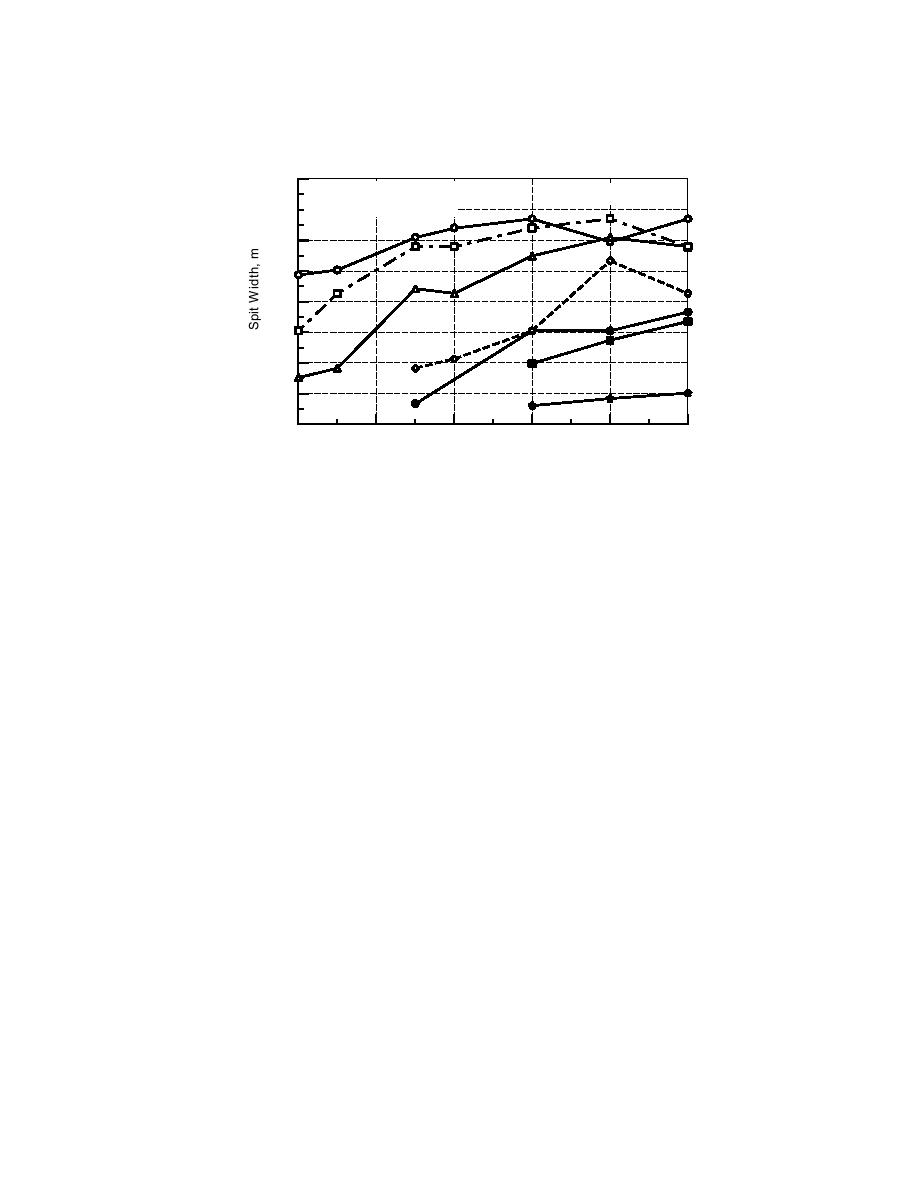
model study whereby spit width increased with increasing wave period, increasing
wave height, and increasing tidal range.
0.8
H = 2.4 cm, T = 1.1 sec
Distance Downdrift, m
Constant Water Level
0.7
0.6
0.3 m
0.5
0.6 m
0.4
0.3
1.2 m
0.9 m
0.2
1.8 m
1.5 m
0.1
2.1 m
0.0
20
40
60
80
100
120
Elapsed Time, min
Fig. 11. Spit width in presence of flood current, constant waves.
CONCLUDING DISCUSSION
For an inlet spit or a spit created and maintained primarily by longshore sediment
transport, it has been demonstrated that substantial progress can be made in
quantifying spit evolution by analytic means. The approach, process-based modeling
involving temporal and spatial scale (for example, hours to days and meters to
hundreds of meters) appears capable of representing and predicting spit behavior for
a wide range of hydrodynamic forces and ambient bathymetric conditions.
Parameters describing spit geometry and dynamics were classified according to
relative time scale of the action of the governing physical processes. Through this
classification, systematic study of spit dynamics can be made through field and
laboratory measurement, as well as through analytical modeling. Movable-bed
physical models have potential for providing considerable useful data to quantify spit
dynamics in an integrated way under realistic conditions.
ACKNOWLEDGEMENTS
It is a pleasure to acknowledge the assistance of several colleagues during the
course of this research. Deidre Williams and Dan Prouty (Texas A&M University-
Corpus Christi) obtained the DGPS coordinates at North Beach and reduced the data.
Bill Seabergh (Waterways Experiment Station) led the physical modeling effort.
Deidre Williams and Dan Heilman (Shiner, Moseley and Associates, Inc., Corpus
Christi) assisted in obtaining aerial photographs and background data for North
Beach. Julie Dean Rosati, Bill Seabergh, and Dr. Adele Militello commented on
drafts of this paper. Permission granted by Headquarters, U.S. Army Corps of
Engineers, to publish this paper developed under the Coastal Inlets Research
Program, Inlet Channels and Adjacent Shorelines Work Unit.
Kraus
15




 Previous Page
Previous Page
